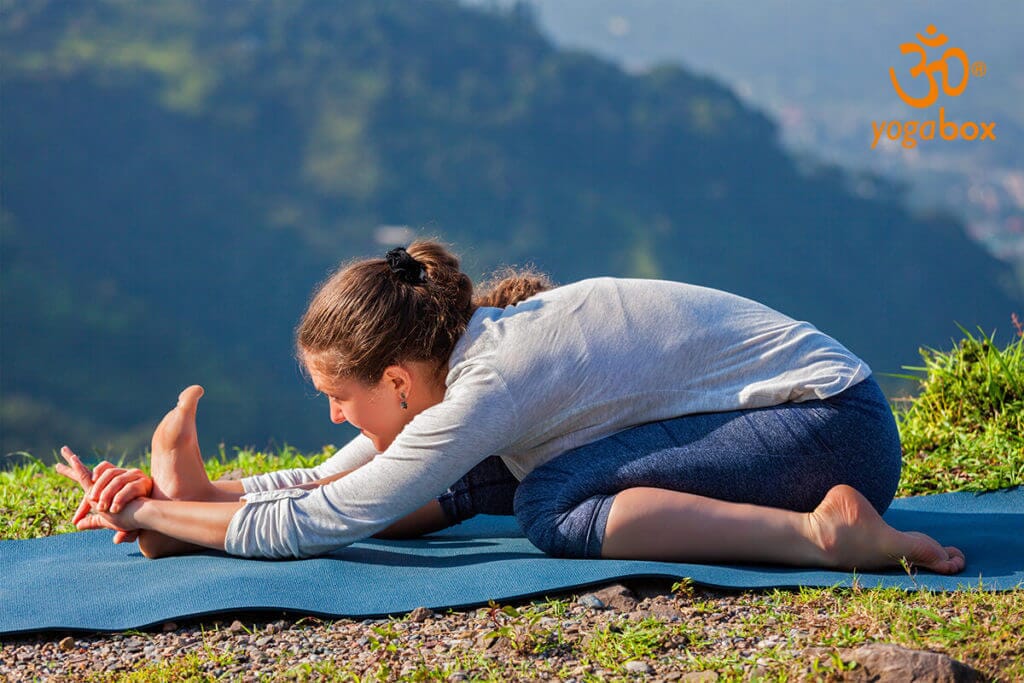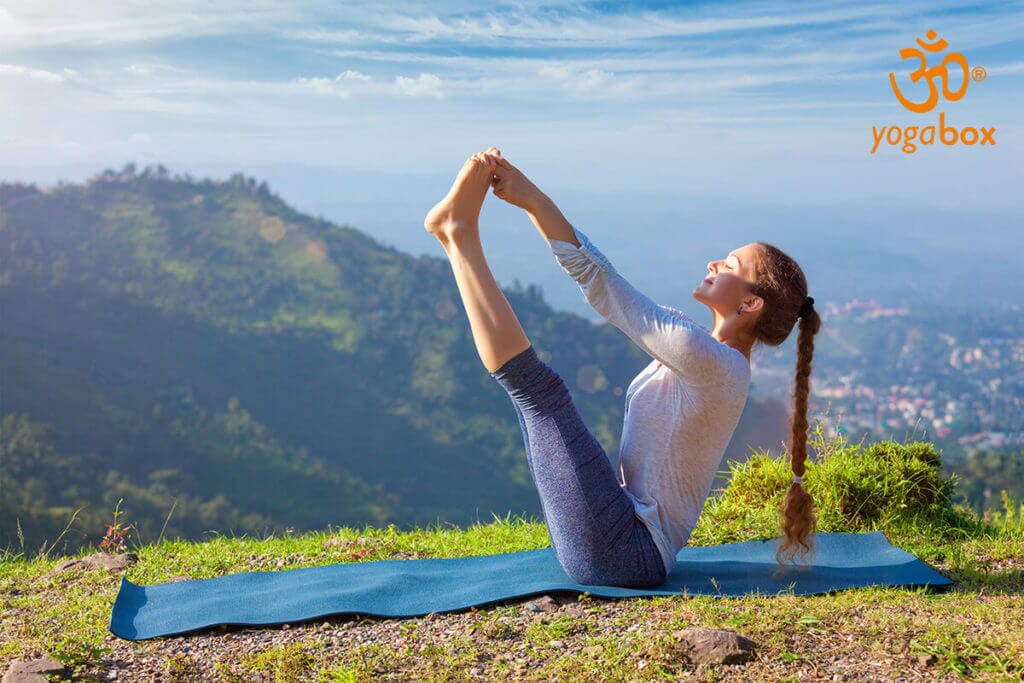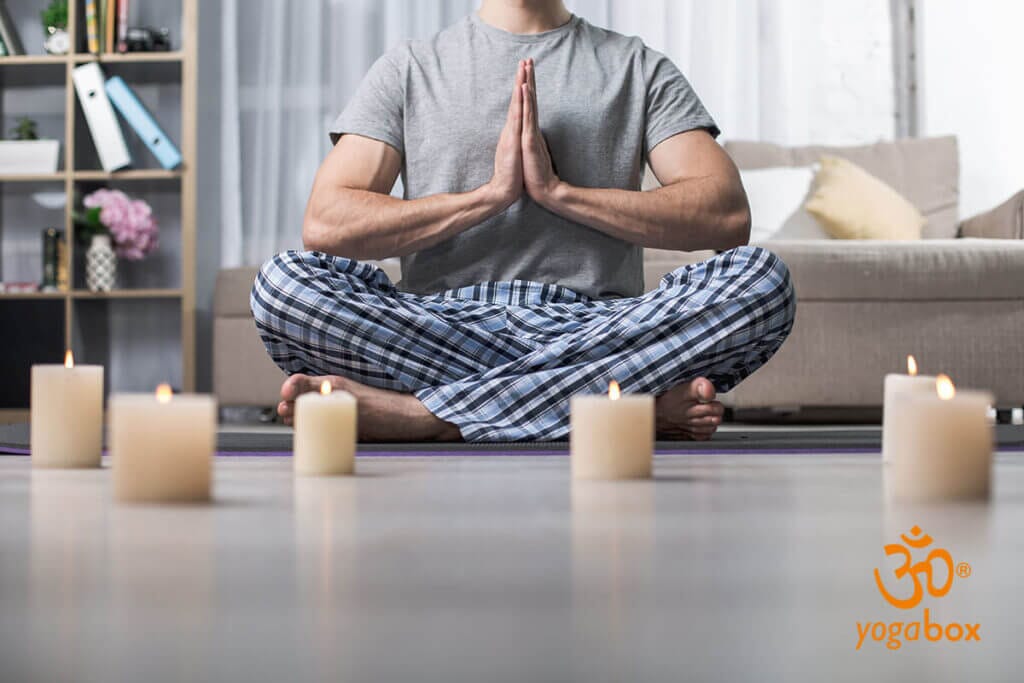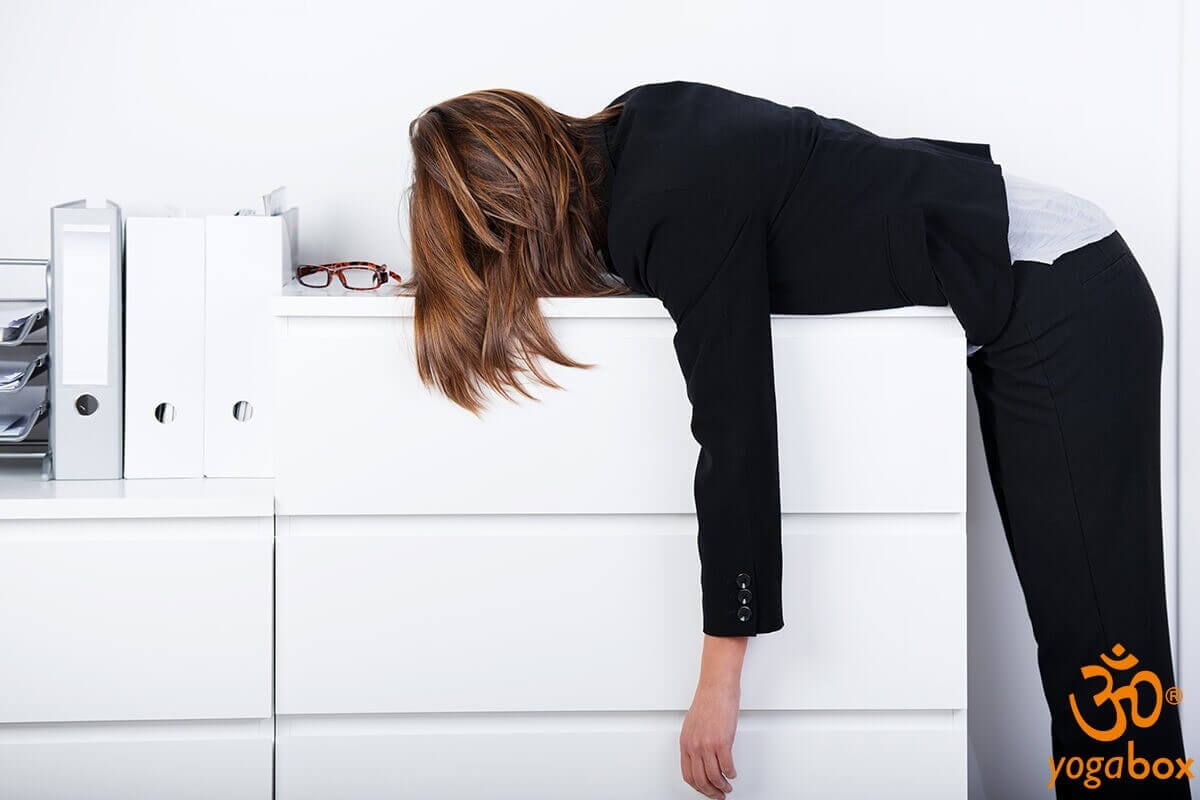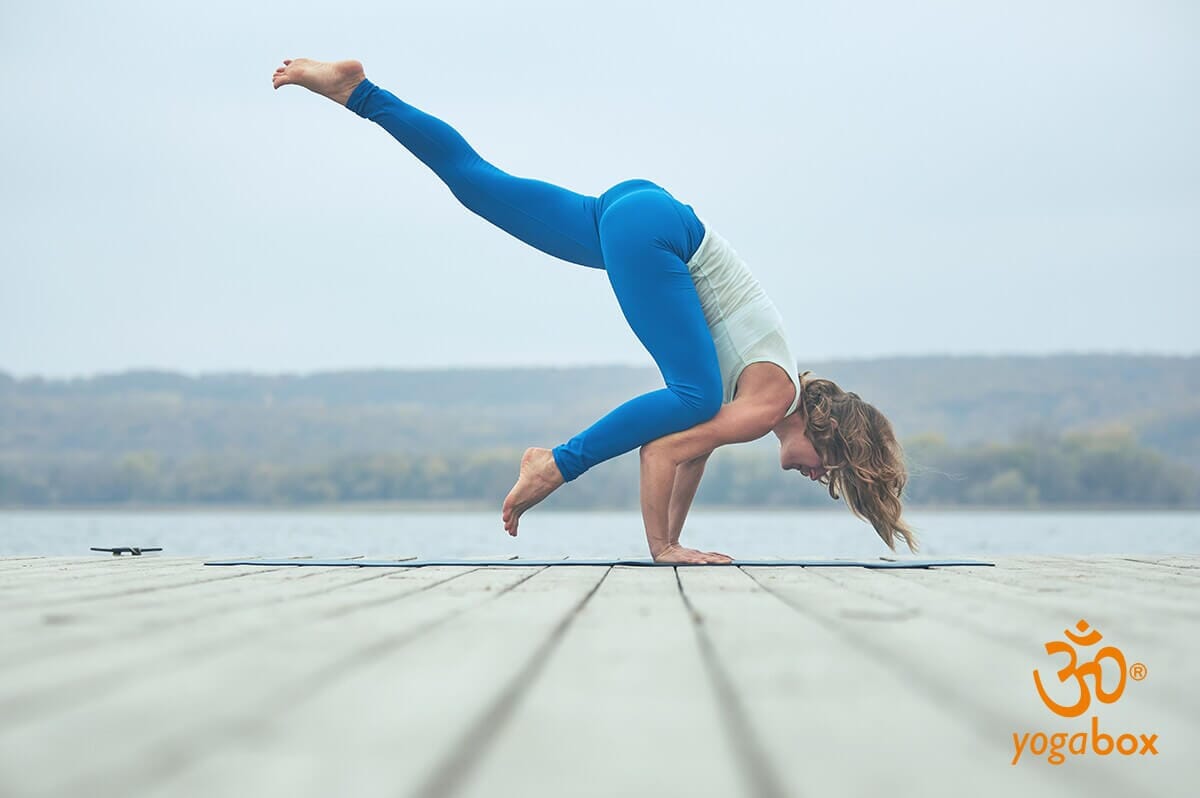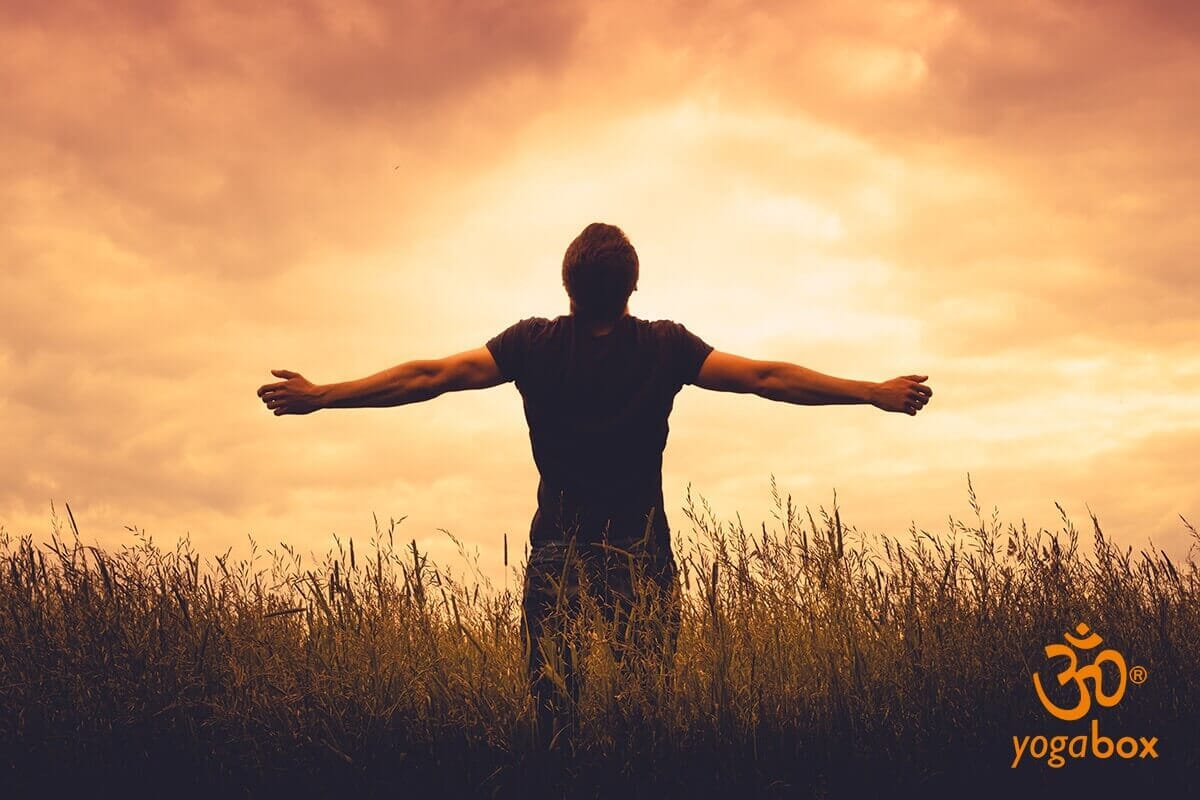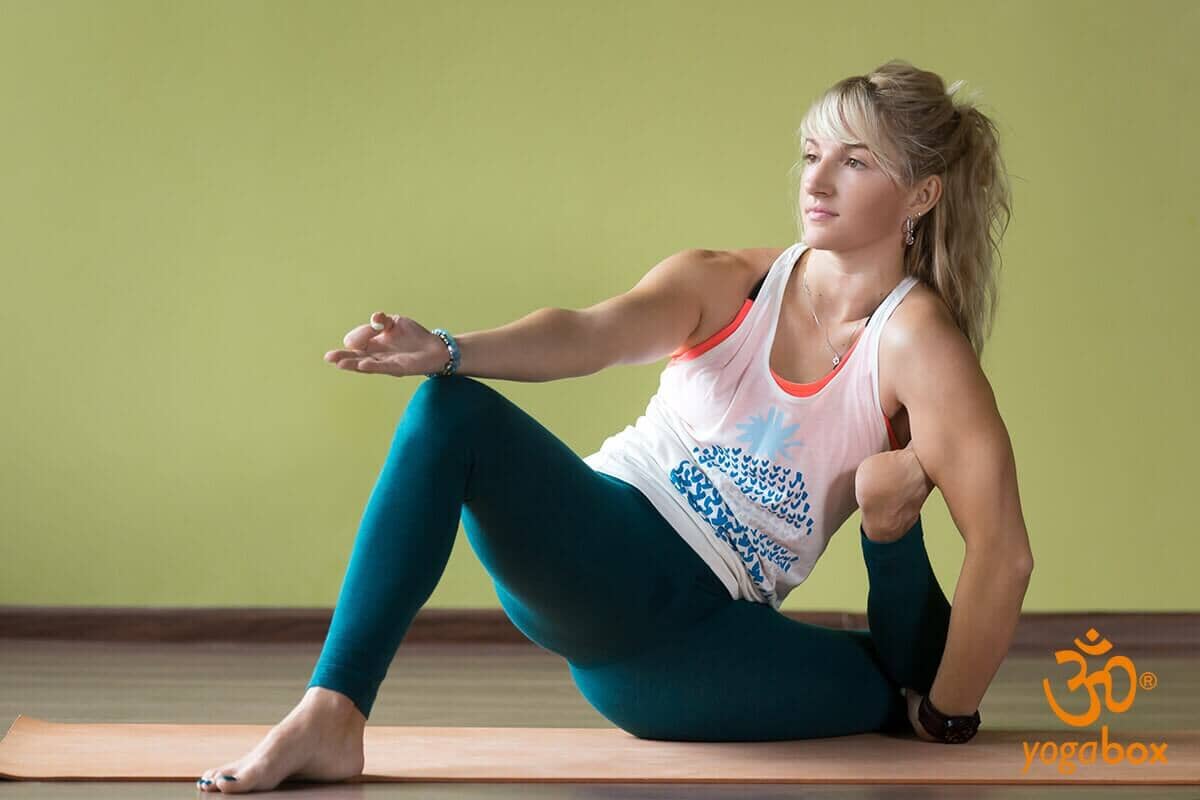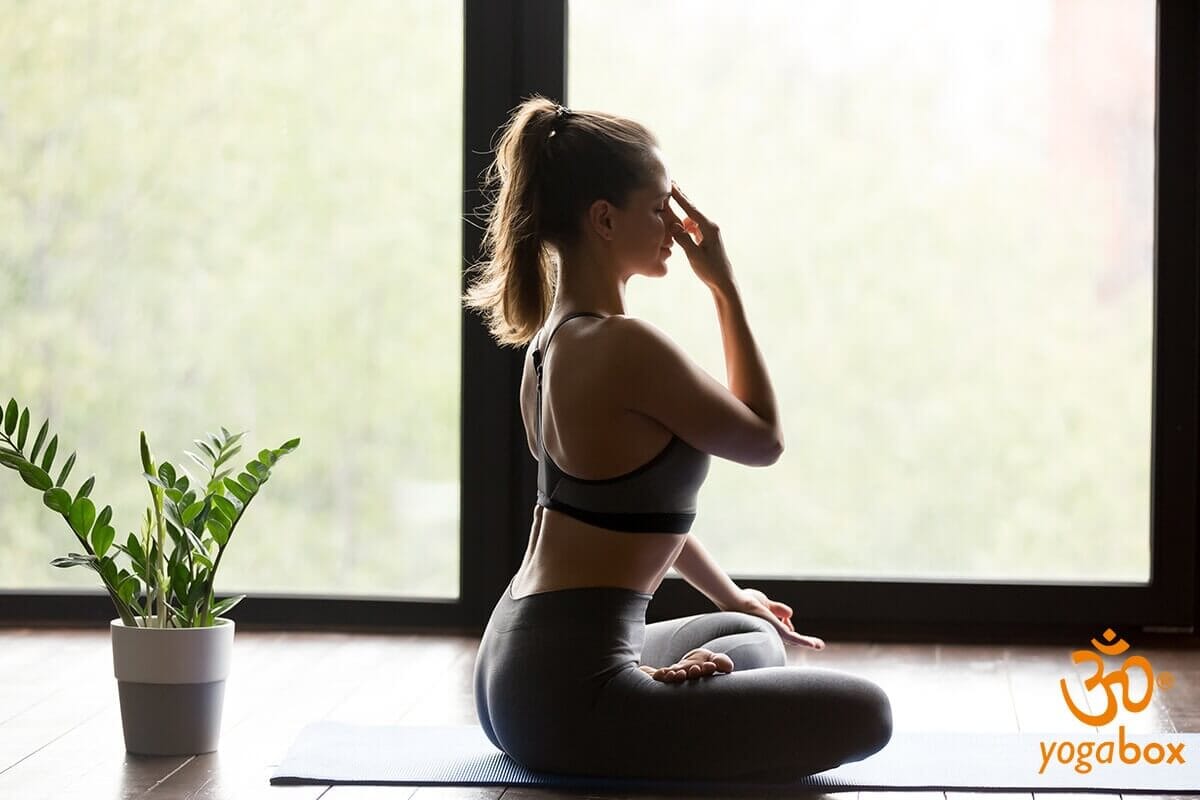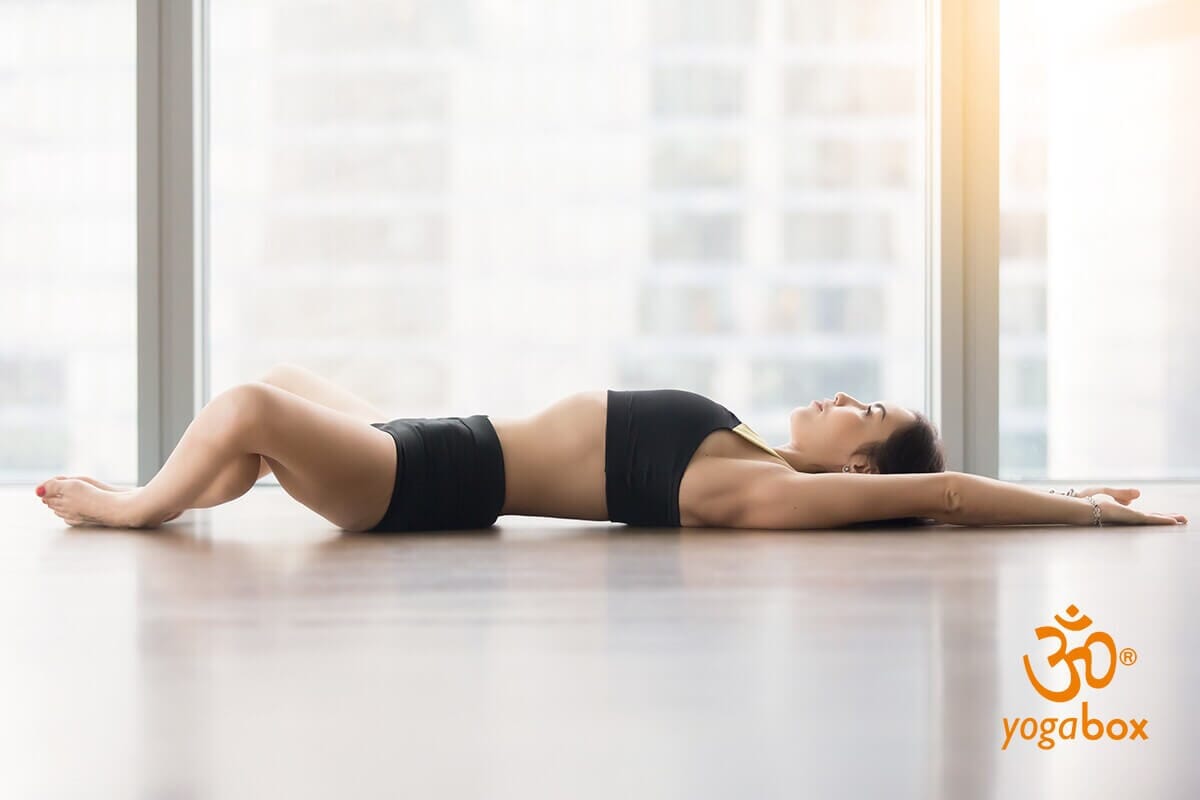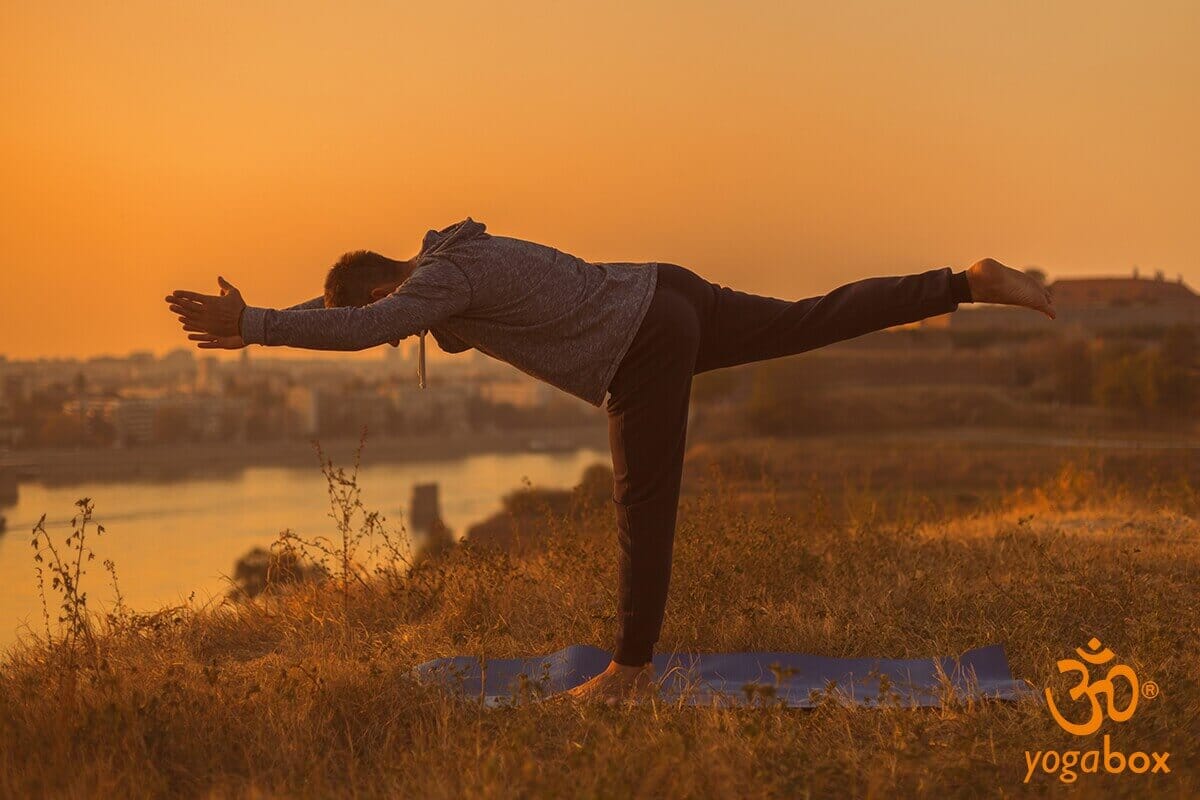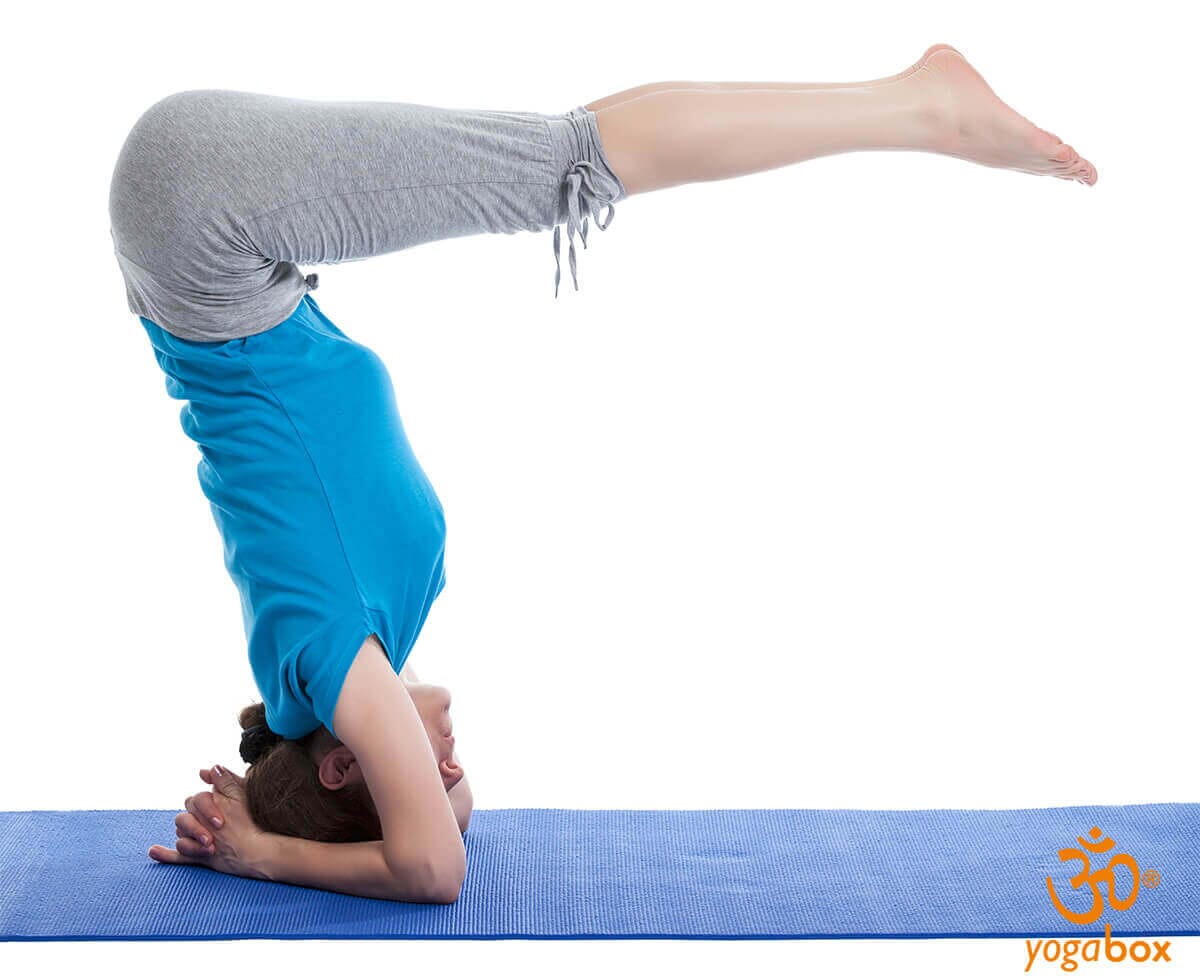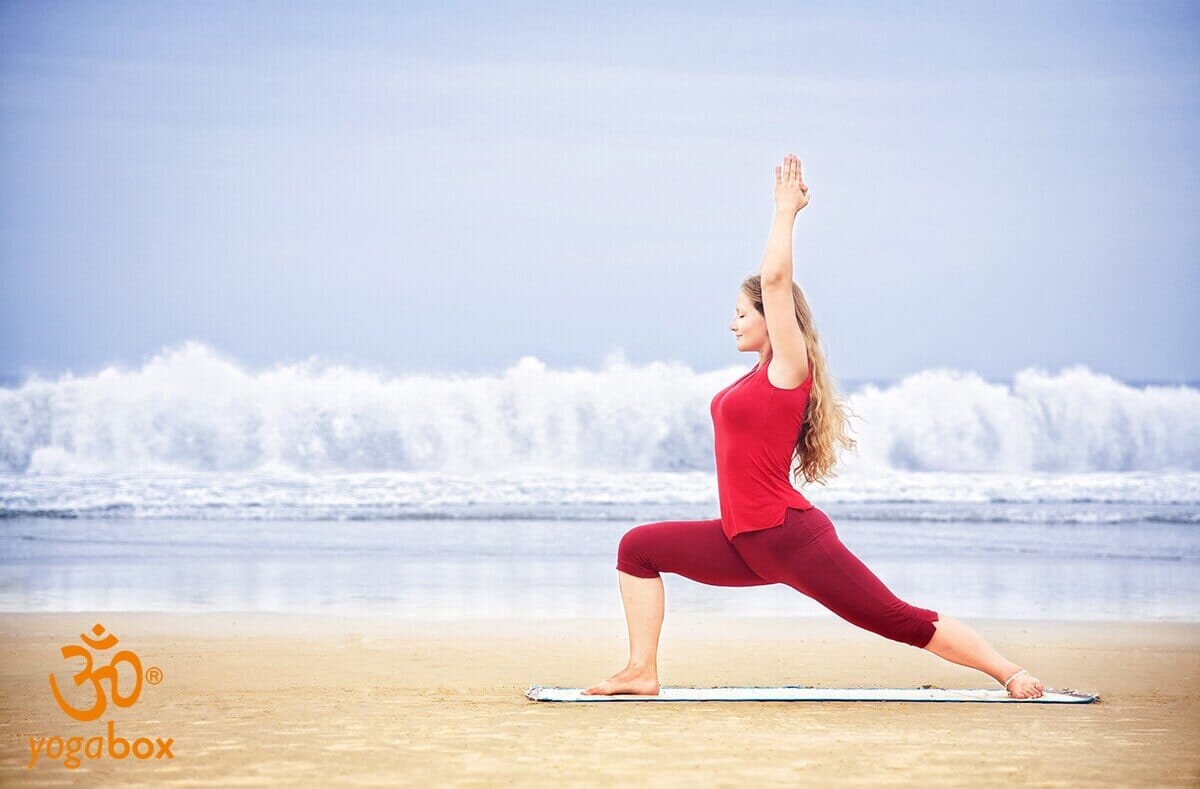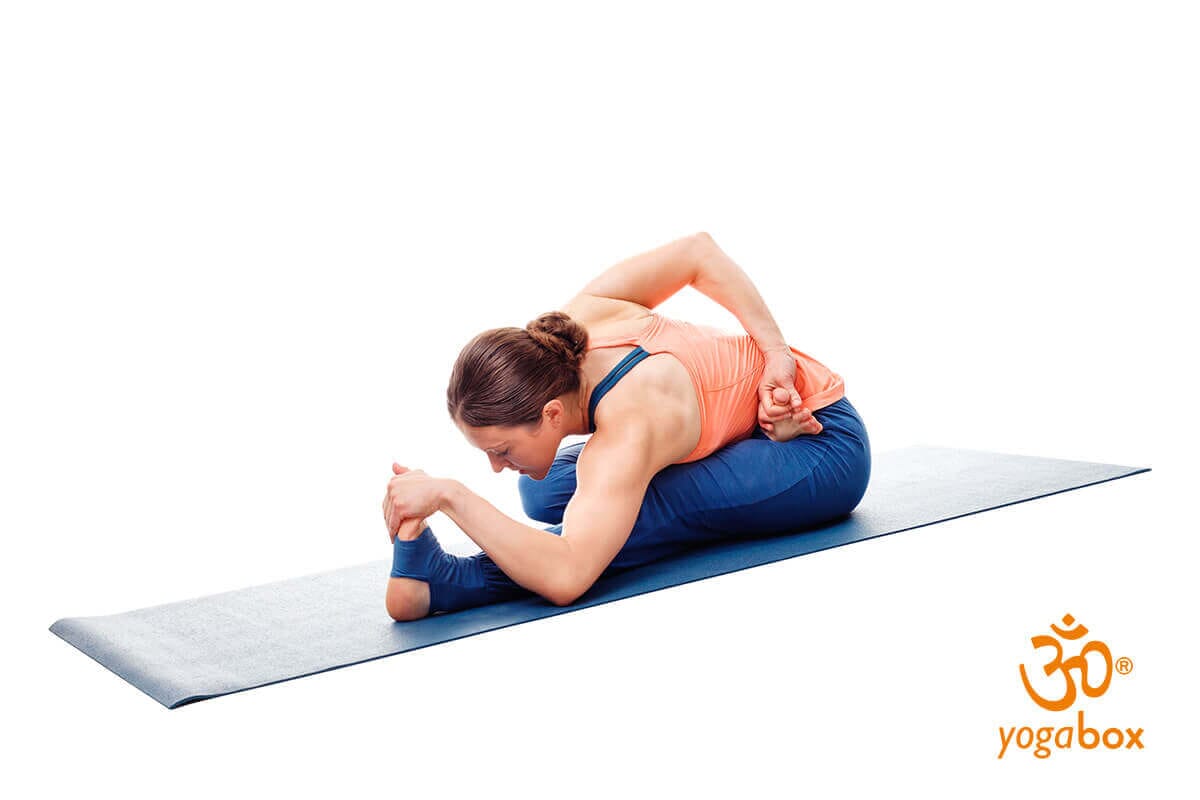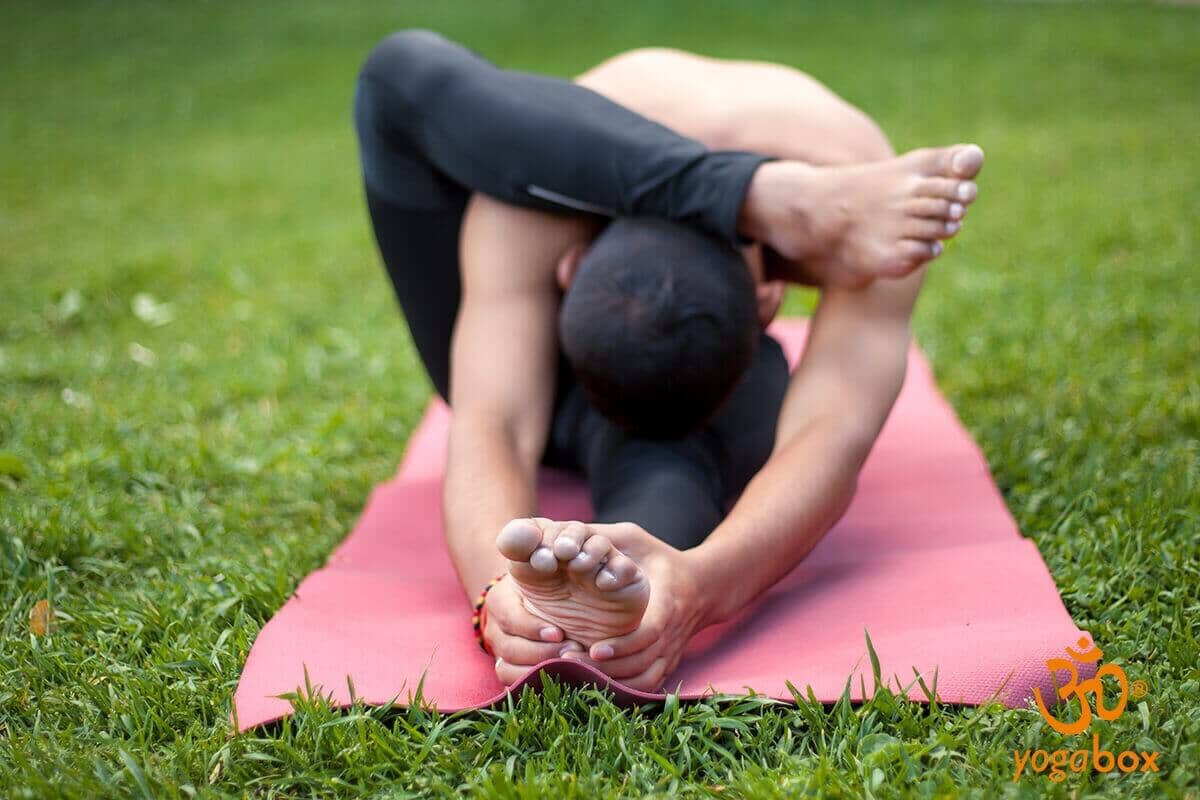There are three variations of Yoga Warrior, all of which are very powerful. Virabhadrasana I, or Warrior I, is known as the pose of the good hero. The goal of this asana is to strengthen the thigh and gluteal muscles, build inner strength, and increase determination. You can practice this standing pose in the Vidya basic series, initially after Sun Salutation, or at the end after Trikonasana (Triangle) . Virabhadrasana I can also be practiced by yoga beginners, but is considered an intermediate yoga exercise. You will now learn how to perform the exercise and what to keep in mind.
Virabhadrasana I - the Warrior I - for more determination and self-confidence
Virabhadrasana I - Warrior Virabhadrasana I - what exactly is behind it?
Virabhadrasana I, a standing pose, was named after a warrior from Indian mythology . The word Virabhadrasana is derived from Virabhadra, the hero who plays an important role in South Indian mythology. He fights for good. The starting position for all the poses in the hero series is the tree pose. Many people feel more confident through this asana. The power in this yoga pose comes from a standing position. It is channeled into your arms and beyond.
How to perform Virabhadrasana I? Step-by-step instructions:
Stand upright and take a big step about one leg length apart.
Step your right foot back. Stand in a lunge position with your hips pointing forward.
Turn your back foot outward about 60 degrees.
On the next exhale, bend your front leg . Place your feet shoulder-width apart, with your knee directly over your ankle.
The swords, symbolized by the powerfully upwardly stretched arms and hands, pursue the goal of gaining determination and energy and of growing beyond oneself when performing the exercise.
Your arms should be parallel to each other, with your palms facing inward. If you have shoulder pain, your arms don't have to point upward. You can also hold them outward. Don't tense your shoulders; keep them relaxed.
Lean your head back, look down at your hands, and breathe in and out calmly. Stay in Virabhadrasana I for 30 to 60 seconds. If you have neck problems, you can also look forward instead of up.
To exit the asana, place your arms on your hips, take a small step forward with your back foot, exhale, and relax your arms beside your body.
Then repeat Warrior I on the other side. Virabhadrasana I requires concentration, inner calm, and stamina. If you tend to arch your back, make sure you raise your arms to the sides above your head. This will make it easier to keep your back straight. Make sure you breathe consciously.
What physical and mental benefits can you achieve with Virabhadrasana I?
Raised arms create more determination, energy, stamina, and self-confidence. They can help you surpass yourself. Virabhadrasana I also stretches the shoulders, back, neck, abdomen, and groin. It can also improve balance and equilibrium, increase endurance, and strengthen the lungs. The latter results from expanding the chest, thus supporting deep breathing. Stretching the arms increases breathing volume. Virabhadrasana I is also said to be an excellent preventative measure against osteoporosis, stimulate the metabolism, help with digestive problems, and reduce fat around the hips.
Conclusion
Virabhadrasana I has a strengthening, harmonizing, and grounding effect. The key to success is proper posture and breath. The better you connect with the latter, the easier it will be for you to feel the warrior pose and find stability. People with a weak heart, high blood pressure, and unstable knee joints should not perform this yoga exercise.
Image © byheaven / 123rf.com
